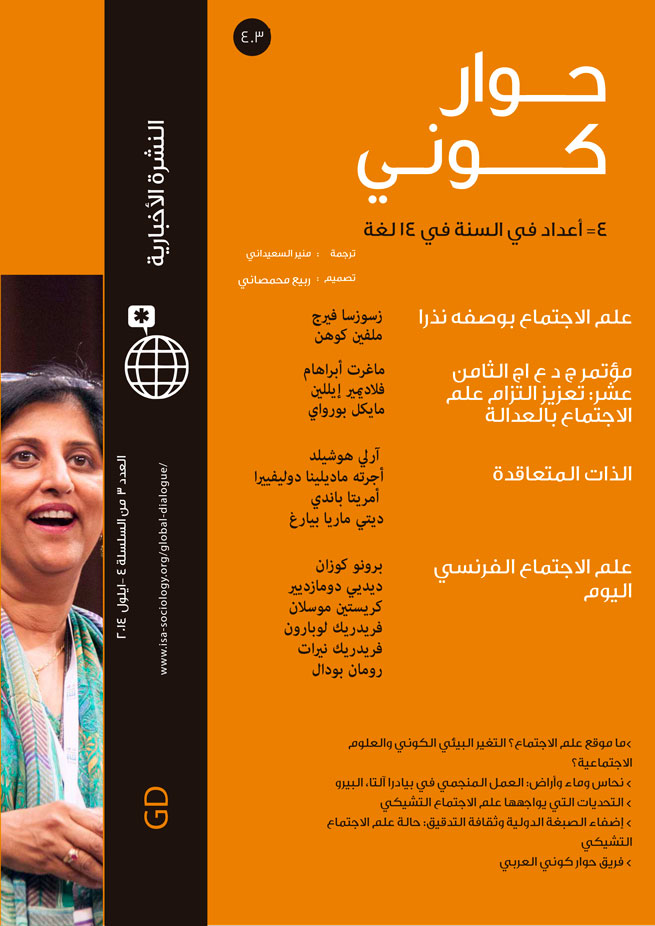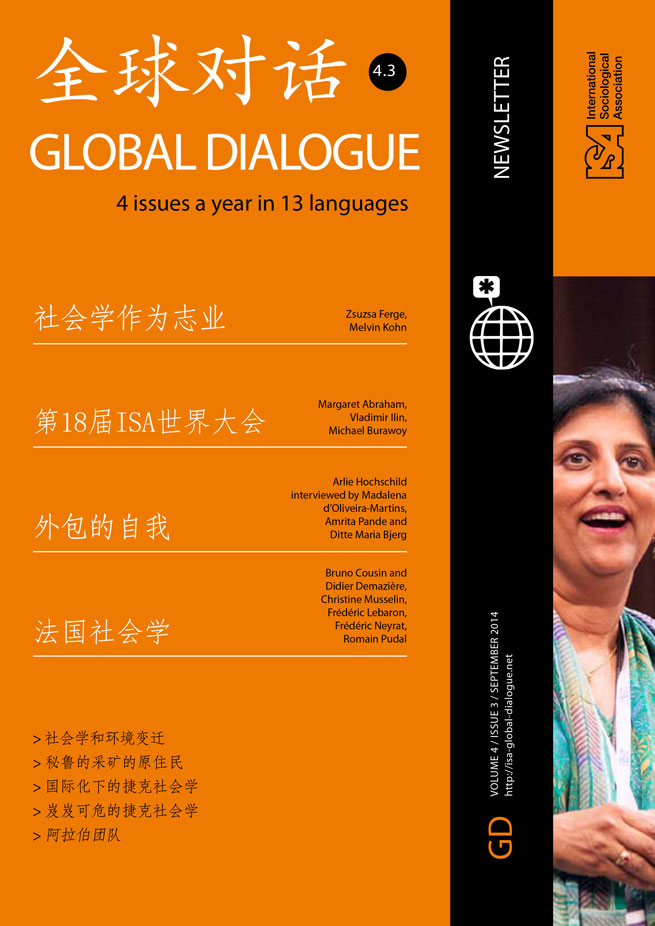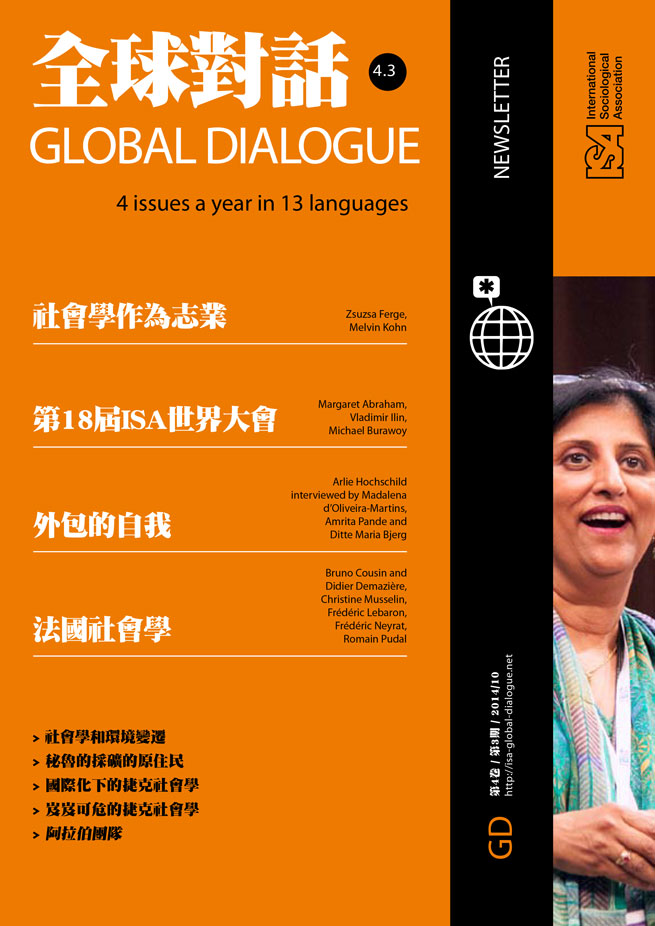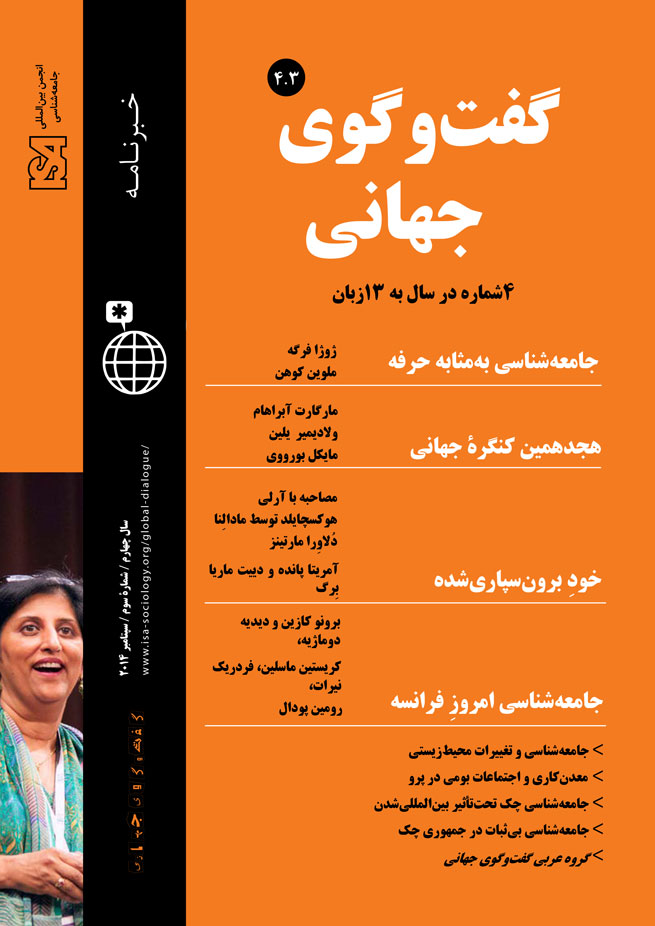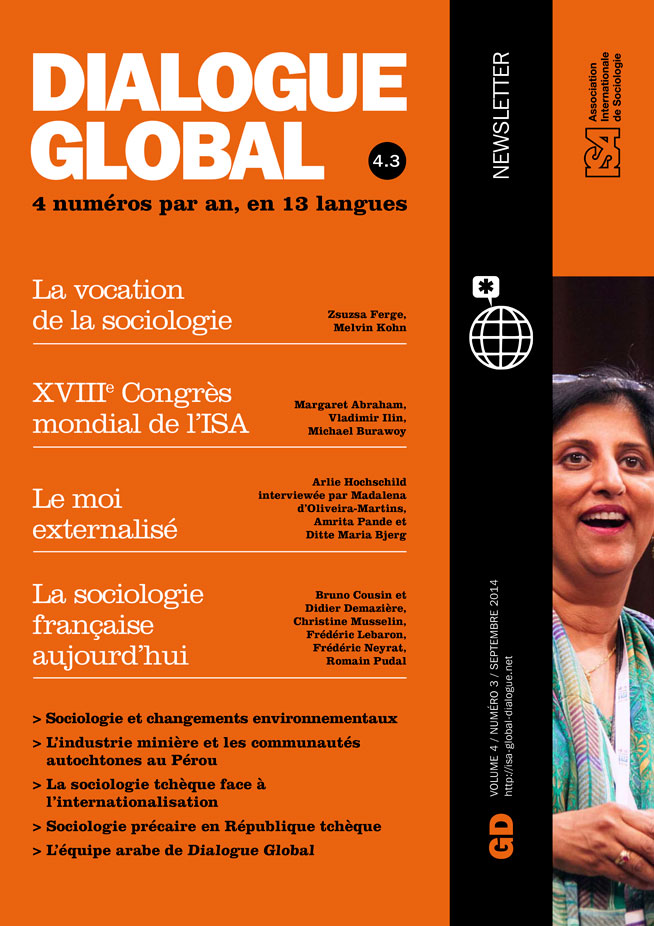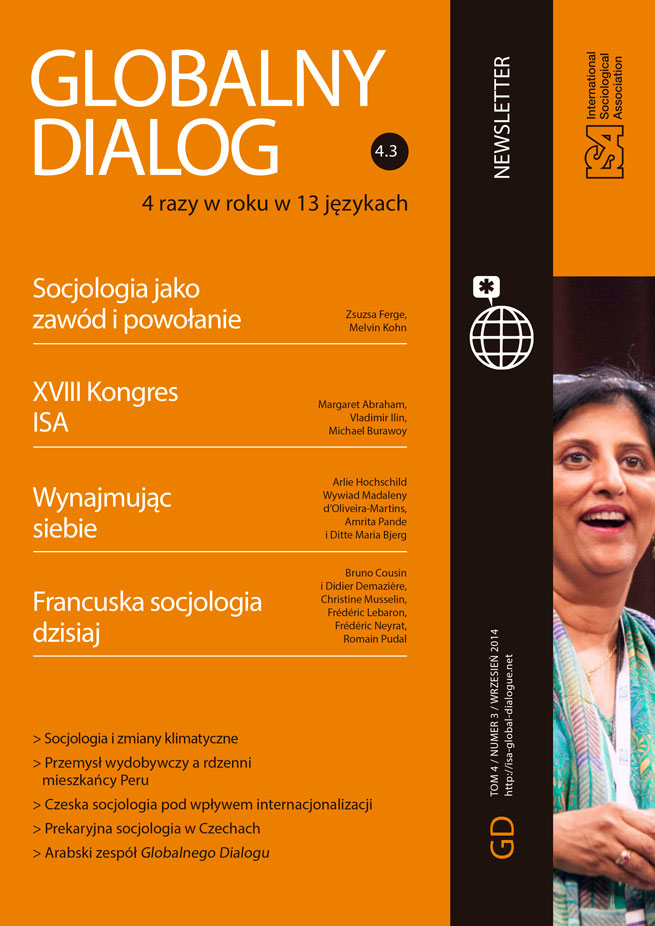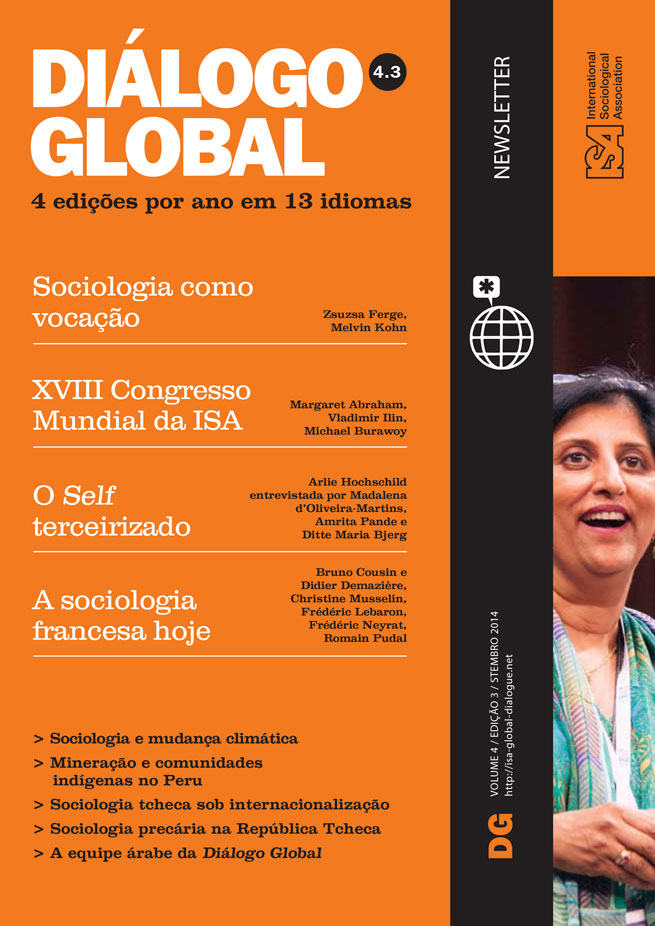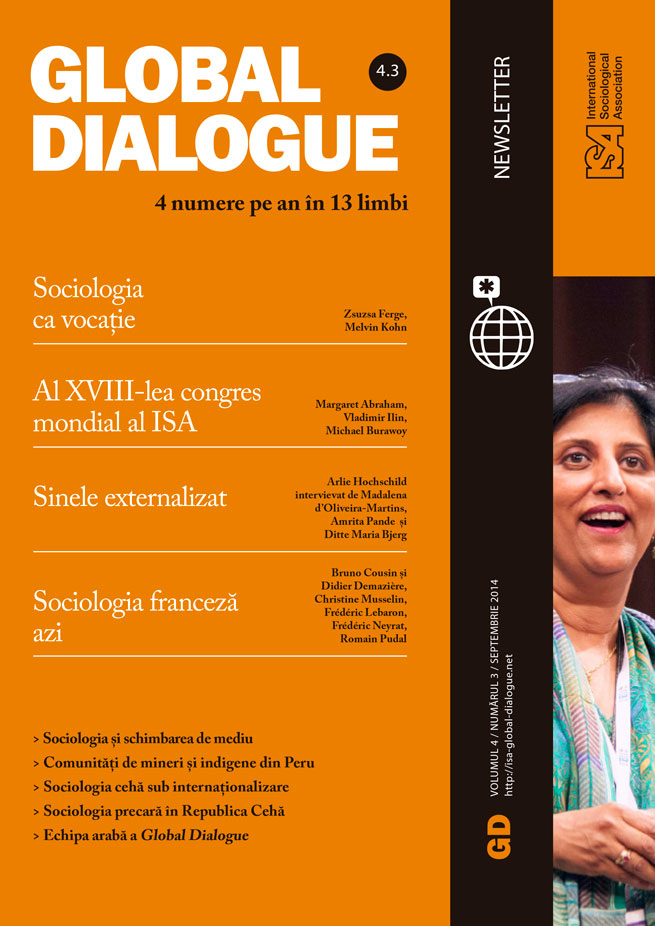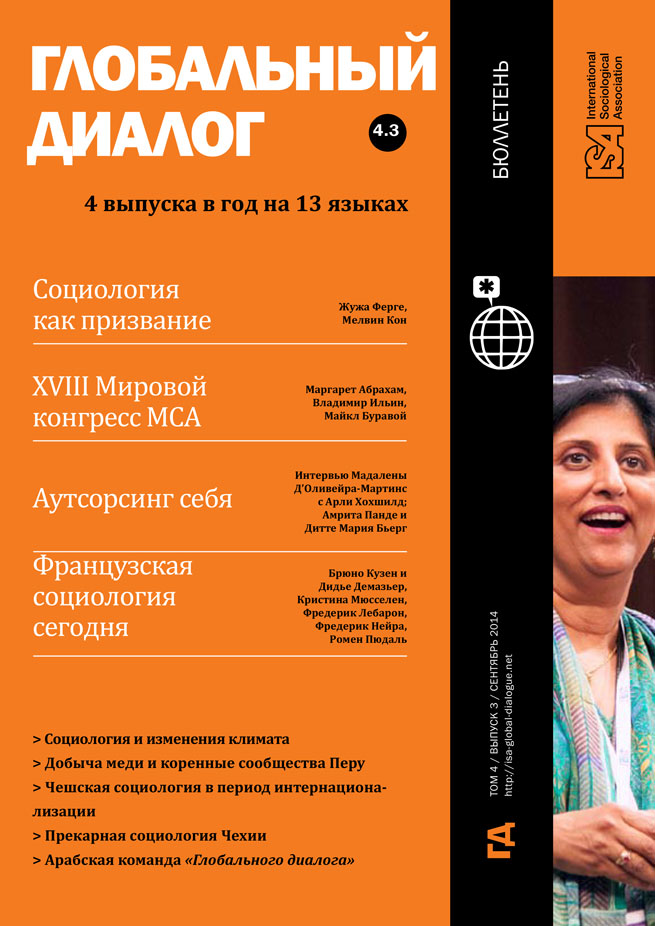Read more about The Outsourced Self

Emotional Labor around the World: An Interview with Arlie Hochschild
by Madalena d’Oliveira-Martins and Arlie Hochschild
September 08, 2014
“It was excellent. I’ve never seen documentary theater as urgent as this, where a PhD sociologist and actress performs the research of a subject.”
Simon Andersen, “Smagsdommerne,” Danish National Television.
For our colleagues in theater and performance studies, using creative performance for social inquiry may be a mundane occurrence, but not so for us sociologists. Most of us are either closet or classroom performers who bring creativity rather sneakily into our otherwise textbook sociological imaginations.
So when Ditte Maria Bjerg, artistic director of Copenhagen-based Global Stories Productions labeled me an “expert” on commercial surrogacy in India and asked if I would collaborate with her on an interactive theatre performance on the same topic, I did a little jig. Ditte’s previous artistic production includes performances based on American sociologist Arlie Hochschild’s works on emotional labor, and it was Arlie who put the two of us in touch. Ditte’s plan was simple: to “prepare an artistic work on commercial surrogacy” for which she needed to mine my PhD fieldwork. My previous life as a performer in India turned out to be quite convenient and I was promoted from a field notes provider to an educator-performer.
So started our interdisciplinary journey – two artist-researchers exploring interactive community theater as a way to extend our understanding of surrogacy.
We develop the following narrative as a series of field notes by a sociologist (Amrita) learning how to use creative means to re-study her work, and a creative artist (Ditte) using the dual lens of an artist and a researcher. We focus on two moments in the making of our performance Made in India: Godh Bharai (ritual Hindu baby shower) organized by the surrogates for Amrita, and an embroidery project with the surrogates. On the one hand, both moments allowed us to interact with the surrogate mothers outside of their role as “disciplined mother-workers,” living under strict medical surveillance in surrogacy hostels (Pande, 2010). On the other, these experiences could be shared with audiences around the world – people who would otherwise never get to “interact” with the mother-workers in India. We explore both moments as community theatre, albeit involving two distinct communities – that of the surrogates and that of audiences. The ultimate ambition of the interactive performance Made in India: Notes from a Baby Farm is to bridge the two communities so that they can interrogate how they see themselves, how they see others, and how they see themselves in relation to others.
Enacting a Godh Bharai (baby shower)
Ditte: Reading Amrita’s field notes, I quickly realized that to turn these stories into a sensory stage performance, I needed to go to India together with Amrita and my artistic team, a stage designer and a video-photographer, to create visual material, which would interact playfully with the stage and the audience – and to somehow investigate the relationship between the expert-interviewer-sociologist Amrita and the interviewed women. Exactly how to do this, I didn’t know, until the day Amrita called me and said: “Ditte... I will be pregnant during our journey.”
Amrita: Ditte’s introduction to my field was through the fertility clinic and surrogacy hostels in India where I had done much of the ethnographic work for my book Wombs in Labor. The decision to revisit the ethnographic field is a nerve-wracking one; you are never sure whether the respondents will welcome you back with open arms or lambast you for misinterpreting their lives. My return was trickier because I was, at that time, in my sixth month of pregnancy. I was unsure how my pregnancy would be perceived by the surrogates themselves. My concerns about potentially being a disrespectful researcher were dismissed in no uncertain terms by the former surrogates and friends who I contacted via email and telephone. The women were eager to celebrate the “naive” (read unmarried) researcher in her new avatar and Ditte was eager to make my return an entry point to the interactive theater project.

When we arrived at the surrogacy hostel, I found some old friends – women who were pregnant as surrogates for the second or third time. They enthusiastically took it upon themselves to organize a Godh Bharai (Hindu baby shower) for me. The hostel matron often organizes such a ritual for the surrogates in their seventh month of pregnancy. The surrogate mothers were, for once, allowed to break all hostel rules, miss their afternoon naps and dress me up instead. Jigna, the only upper-caste surrogate, volunteered to serve as the “priest” for the ritual, and Puja became the make-up artist. In my six years of research in this field, this was the first time I was seeing the surrogates away from their dormitory beds, physically active, singing, dancing and laughing in such an unrestrained manner. The women were in charge, whether the artistic team liked it or not. If this was what an artistic intervention could achieve, I was all for it! As the singing continued into the afternoon, a surrogate mother Vaishali quietly remarked, “The only difference is that at the end of it all you get to keep the baby.”
Embroidery Project
Amrita: Given the anxieties surrounding surrogacy, it is hardly surprising that debates around surrogacy find it hard to steer away from morality. Surrogacy hostels add to the dystopic vision of baby farms. “But is there any point just constantly talking about how immoral it is that these poor brown women are being forced to sell their wombs? Don’t we need to move on and realize that these women are workers, workers with workers rights? What do you think?” I script these lines for European theatre-going audiences and wonder how they would react. How does one shift the lens away from morality towards labor rights?
Ditte: One of the “training” activities for the women residing at the surrogacy hostel is embroidery. Twice a week a teacher turns up and the women are taught how to embroider mundane motifs like flowers and leaves. This gendered work seems “fitting” for pregnant women, it does not hurt the baby, and does not challenge the disciplining tactics, the medical staff or the clients visiting the hostel. But we came up with a devious plan: Could we not collaborate with the women and produce some embroideries for the performance and create motifs about their “work” as surrogates? The women would get paid for their work and our audiences would get a concrete representation of the women, and understand that these women are workers, able to produce something else than babies. The project is formed together with a famous artist/activist Mallika Sarabhai and SEWA (an NGO for informal women workers). We arrive at the surrogacy hostel where 50 pregnant women are gathered in the TV room to hear our ideas and see drafts of the motifs. As they start realizing that the motifs are all of “products” and their work as surrogates they start giggling, laughing and collaborating. Our ideas about motifs like injections, embryo transfers and egg removal are supplemented with their own more pressing images of surrogacy – airplanes, cellphones and hot chili peppers.
In the final performance of Made in India these embroideries are attached on a string and presented to the audience, right after Amrita has floated the notion of surrogacy as labor, and the surrogates as workers with workers’ rights. The audience is given the opportunity to touch these embroideries during the break and to reflect on the fact that each of the pieces of embroidery represents a woman working as a surrogate mother in India. In the last part of the performance the audience can make up their minds about this work and ask questions to the many characters in this process.
Made in India – on tour 2013-2014
Made in India has been a great success in Scandinavia. The performance opened in Stockholm Fall 2012. After touring all over Sweden, in 2013 the show was presented at several venues in Denmark. Made in India now exists in a touring version. Amrita Pande and Ditte Maria Bjerg want to present the performance at conferences and festivals, as an example of how art and academics can stimulate each other. The performance is two hours long, including a staged question and answer with Amrita Pande who plays many different characters involved in the surrogacy process.
For more information, reviews and visuals: www.globalstories.net
Amrita Pande, University of Cape Town, South Africa <amritapande@gmail.com>
Ditte Maria Bjerg, Global Stories Productions, Denmark
This issue is not available yet in this language.
Request to be notified when the issue is available in your language.
If you prefer, you can access previous issues available in your language:
